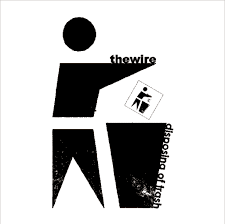 Wondering what to do with all those chemical nasties lurking in your cupboards? Here's how to dispose of them safely.
Wondering what to do with all those chemical nasties lurking in your cupboards? Here's how to dispose of them safely.Flammable chemicals and sharp objects pose a serious risk to others -- such as waste collectors and handlers, children and curious animals -- when they're sitting in your garbage bin and going into the garbage truck.
Clearly you don't want all these nasties sitting around your house either, endangering the health and safety of you and your family. So what do you do with them?
The following are some health and environmental hazards associated with products commonly found in the home, and options for their safe disposal.
Paint and related products
Paints, thinners, varnish, wood stain, solvents, methylated spirits, turps, glues and fillers.
- They can be highly flammable.
- They can give off toxic fumes when they evaporate or burn.
- They can be toxic to plant, animal and aquatic life, as well as people.
- Aerosol cans are potentially explosive if heated or punctured.
- Oil-based paints contain flammable solvents, and brushes have to be cleaned with turps, another disposal problem.
- Use water-based paints rather than oil-based whenever possible.
- Calculate the area to be painted, and buy the smallest tin of paint that will meet your needs.
- Never pour these products down the sink or an outside drain.
- Use up the products, or give them to friends or neighbours who can use them. There may be a paint collection centre near you for community projects.
- Old paint that has hardened can be thrown out with your normal garbage. Leave the lid off the tin if there isn't much left (preferably outside, so the fumes don't cause harm), or pour it over newspaper, let it dry, then throw it away.
- If none of these options is practical, phone your local council for advice.
Medicines, needles and syringes (including veterinary products).
- If left around the house, expired or left-over medicines pose a safety risk, particularly to children or people with poor eyesight.
- If you dispose of them in your household garbage, children or animals could be poisoned.
- Putting medicines down the toilet or sink can affect sewage treatment (which depends on bacteria and other organisms to break down waste).
- Used needles and syringes pose a health and safety risk to waste handlers, children and curious animals.
- Don't put bottles containing pills or liquid medicines in your garbage.
- Take unwanted pills out of their packaging, and wrap them in newspaper. Soak the newspaper thoroughly to dissolve and dilute the pills, put it in a plastic bag and then dispose of it with your normal garbage.
- For liquid medicines, if there's only a small amount left, pour it onto several layers of absorbent paper, wrap securely in a plastic bag and put it in your garbage bin.
Ammonia, chlorine bleach, disinfectant, dry cleaning fluid, drain cleaners, polish and oven cleaners.
- Some cleaners give off dangerous (and potentially lethal) fumes when mixed -- some toilet cleaners with bleach, for example.
- If you tip large quantities down the sink or toilet, they can interfere with the bacteria which break down waste in the sewage treatment process.
- Never put them down the sink or drain. (Some will obviously go down the sink while you're cleaning, but in small quantities they won't do a great deal of harm. However, heavy use can kill bacteria in the sewerage system and may harm human health and the environment.)
- Use up the products, or give them to friends or neighbours who can use them.
- Use less hazardous alternatives where possible.
- The cadmium in nickel cadmium rechargeable batteries (NiCads) is a highly toxic heavy metal.
- Car batteries contain lead and highly corrosive acid.
- Nickel metal hydride rechargeable batteries (NiMHs) don't contain toxic material and can be disposed of with your household waste.
- Using rechargeable batteries will mean fewer batteries going to landfill.
- Never burn batteries -- this releases dangerous fumes and can cause an explosion.
- For your old car battery, check with your local garage or car battery retailer -- they might take it from you. When you're transporting one, handle it very carefully and make sure the acid doesn't leak out.
- Fuels are highly flammable and dangerous to store around the home. If you don't need it, don't keep it.
- Used motor oil contains a number of toxic chemicals, and may contain lead.
- Oil and water don't mix: don't put motor or cooking oil into the sewerage or stormwater system.
- Used motor oil can be recycled Ñ your local garage or tip might take it. (Ask your mechanic, at your next grease and oil change, if they recycle motor oil.)
- Collect used cooking oil in a sturdy plastic bottle and throw it out with your regular garbage.
- Think before you throw it out Ñ does the product pose a danger to people, pets and other animals, or the environment?
- The best way to avoid future problems of disposing of dangerous products is to buy and use non-hazardous alternatives wherever possible. And only buy what you really need, in the quantity you need.
- Use non-hazardous alternatives wherever possible.
- When you have a choice of pack sizes, buy only as much as you need.
- Give left-over chemicals to someone who can use them.
- Store chemicals carefully in a dry, well-ventilated area, safely locked away from children and pets.
- Leave products in their original containers, and write the purchase date on the label.
- If you're taking chemicals to a hazardous waste depot, make sure they're packed securely and labelled clearly.
- Store chemicals in food or drink containers.
- Tip hazardous chemicals down the sink or toilet -- a sewage treatment plant can't break down all toxic substances, and they could create potentially explosive fumes at the plant. Some chemicals interfere with the biological processes used in breaking down sewage.
- Put hazardous chemicals (including motor oil) down the drain or hose them into the gutter -- they'll go directly into your local waterways.
- Bury them -- they can poison local plants and wildlife, contaminate soil and leach into the groundwater system.
- Unless stated otherwise in this article, don't throw them in the garbage bin. Seemingly harmless on their own, chemicals can react with other substances, possibly creating dangerous fumes, and even a fire or explosion in the garbage truck or waste centre. In landfill, they can leach into the soil and the groundwater system.












0 Responses so far.
Post a Comment